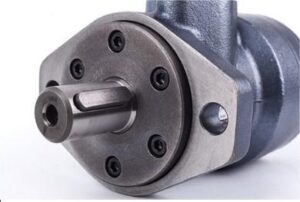Ship ladder, also known as companionway or marine ladder, enables safe vertical access between decks on vessels. Constructed with durable materials like steel or aluminum, they withstand the marine environment. Anti-slip treads or rubber-coated steps enhance grip. These ladders come in various configurations, including straight vertical, inclined, and spiral types. Handrails on both sides ensure stability and safety. Regular maintenance and inspections uphold international safety standards. These essential components facilitate efficient and secure movement for crew members and passengers, promoting smooth operations and well-being aboard the ship.
The Different Type Of Ship Ladder
In ships, there are several types of ladders used for different purposes. Here are some common types of ladders on ships:
- Accommodation Ladder: It is a portable ladder used for embarking and disembarking passengers and crew members when the ship is alongside a pier or another vessel. Accommodation ladders are usually equipped with handrails and may have a platform at the bottom for easier access.
- Pilot Ladder: This type of ladder is specifically designed for pilots to board and disembark from ships. Pilot ladders are typically made of rope or wire and are secured to the side of the ship using strong fittings. They are equipped with wooden steps called spreaders, which help maintain the ladder’s shape and prevent it from twisting.
- Gangway Ladder: Gangway ladders provide a safe passage for personnel to move between the ship and a dock or another vessel. They are often used when the ship is moored alongside a pier or during ship-to-ship transfers.These ladders are typically equipped with handrails and have a platform at the top for ease of access.
- Escape Ladder: As the name suggests, escape ladders are designed for emergency situations where quick evacuation is required. These ladders are usually located in easily accessible areas and are made of durable materials. Escape ladders are equipped with handrails and may have self-illuminating markings to aid visibility in low-light conditions.
- Cargo Hold Ladder: These ladders are used for accessing the cargo holds of a ship. They are usually fixed, vertical ladders that provide entry and exit points for crew members during loading, unloading, and inspection of cargo. Cargo hold ladders are often made of steel and may have anti-slip treads for enhanced safety.
- Engine Room Ladder: Engine room ladders are used to access the engine room and other machinery spaces of the ship. These ladders are typically vertical and may have landing platforms at different levels for ease of movement. Engine room ladders are often made of steel and may have anti-slip treads or rubber-coated steps.
What's The Different Between Accommodation Ladder And Gangway Ladder?
The accommodation ladder and the gangway ladder are two distinct types of ladders used in different scenarios on a ship. Here are the key differences between them:
- Accommodation Ladder:
- Purpose: The accommodation ladder is primarily used for embarking and disembarking passengers and crew members when the ship is alongside a pier or another vessel.
- Design: It is a portable ladder that can be adjusted in length to accommodate the varying distance between the ship’s deck and the shore or another vessel. It is typically equipped with handrails and may have a platform at the bottom for easier access.
- Stability: Accommodation ladders are designed to provide a stable and secure passage between the ship and the shore. They are often equipped with systems such as rollers or davits to ensure a smooth transition and prevent excessive sway or movement.
- Gangway Ladder:
- Purpose: The ladder is used to provide a safe passage for personnel to move between the ship and a dock or another vessel.
- Design: It is a fixed or semi-permanent ladder that is installed on the ship’s side and extends from the ship’s deck to the shore or another vessel. Gangway ladders are equipped with handrails for safety and often have a platform at the top for ease of access.
- Versatility: These ladders are designed to accommodate various ship-to-ship or ship-to-shore transfers. They can be used during mooring operations, cargo loading and unloading, or for personnel transfers.
In summary, the accommodation ladder is a portable ladder primarily used for passenger and crew embarkation and disembarkation, while the gangway ladder is a fixed or semi-permanent ladder used for safe transfers between the ship and the shore or another vessel. The accommodation ladder is adjustable in length and provides stability, whereas the gangway ladder is versatile and suitable for various ship-to-ship or ship-to-shore operations.
How To Choose A Ship Ladder
When choosing a ship ladder, also known as a boat ladder,several factors should be considered to ensure it meets the specific requirements of the vessel and promotes safety. Here are some key considerations:
Regulations and Standards: Familiarize yourself with relevant international and local regulations, as well as industry standards, governing ladder design, construction, and safety. These regulations may specify requirements for materials, dimensions, handrails, tread design, and maximum angle, among other factors.
Material: Determine the most suitable material for the boat ladder based on factors like durability, corrosion resistance, weight, and maintenance requirements. Common materials include steel, aluminum, and fiberglass. Choose a material that aligns with the vessel’s operating conditions and maintenance capabilities.
Load Capacity: Ensure the selected boat ladder can support the expected loads. Consider the maximum weight of personnel, equipment, or supplies that will use the ladder and select a ladder with an appropriate load capacity to ensure safety and structural integrity.
Design and Configuration: Evaluate the available ladder designs and configurations, such as straight vertical, inclined, or spiral. Consider the space available for installation, ease of use, and any specific requirements for maneuverability or access.
The Ship Ladder Regulation-OSHA
The Occupational Safety and Health Administration (OSHA) is a regulatory agency in the United States that sets and enforces workplace safety standards. While ship ladder OSHA regulations primarily focus on general industry and construction, they also include guidelines for maritime and shipyard operations. When it comes to ship ladders, OSHA standards provide specific requirements to ensure the safety of workers and personnel accessing and using these ladders. Some key ship ladder OSHA regulations include:
- 29 CFR 1917.116 – Ship Ladders: This regulation sets forth requirements for the design, construction, and use of ship’s ladders in marine terminals and shipyard employment. It outlines specifications for handrails, treads, risers, and overall construction to ensure safe access and minimize hazards.
- 29 CFR 1915.73 – Fixed Ladders: This regulation applies to fixed ladders on vessels and shipyard facilities. It covers aspects such as ladder design, strength, clearance, rung spacing, and safety devices like cages and wells. It aims to prevent falls and ensure safe vertical access on ships and within shipyard operations.
- 29 CFR 1915.74 – Portable Ladders: This regulation addresses the use and maintenance of portable ladders, including those used on vessels and in shipyard operations. It covers requirements for ladder construction, inspection, and safe use to prevent accidents and injuries.
It’s important for employers, ship operators, and workers to be familiar with ship ladder OSHA regulations to comply with them to promote a safe working environment. By adhering to OSHA standards, employers can help prevent accidents, protect workers’ health and safety, and avoid potential penalties or legal consequences associated with non-compliance.
The Maintenance Of A Ship Ladder
As a marine ladder, is essential to ensure its safety and longevity. Here are some key aspects to consider when maintaining a marine ladder:
Regular inspections: Inspect the marine ladder periodically to identify any signs of damage, wear, or corrosion. Look for loose or missing steps, damaged handrails, or any other structural issues.
- Lubrication: Apply lubricants to moving parts such as hinges, pivots, and locking mechanisms. This helps to maintain smooth operation and prevent rust or corrosion.
Training and awareness: Provide appropriate training to crew members or personnel who use the marine ladder. Ensure they are aware of safe practices, weight limitations, and any specific instructions for ascending or descending the ladder.
Anti-slip measures: Consider adding anti-slip materials or coatings to the marine ladder steps and handrails to improve safety and grip, especially in wet or slippery conditions.






